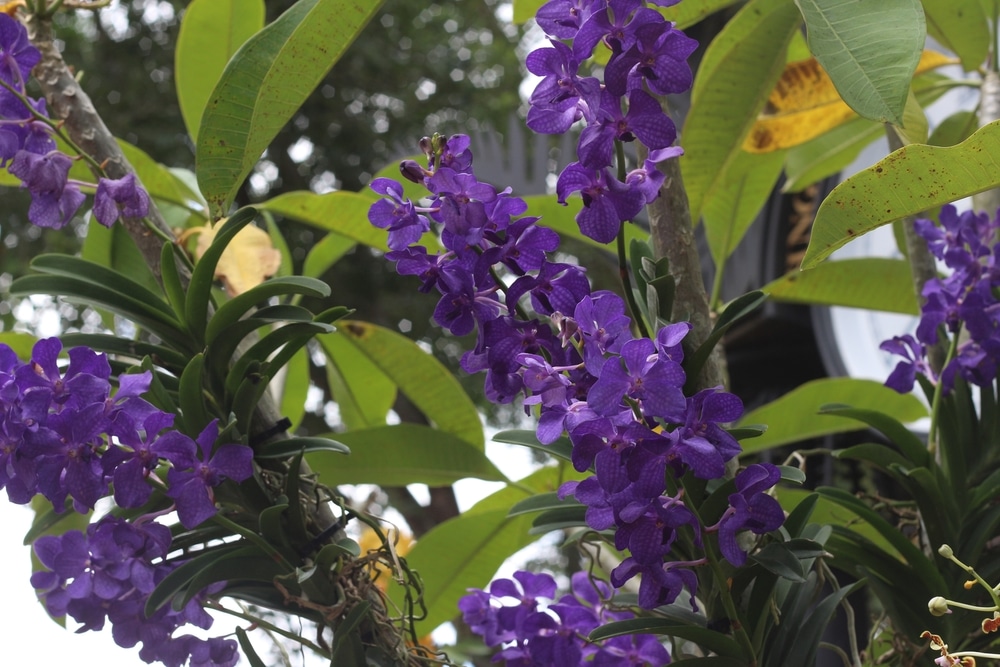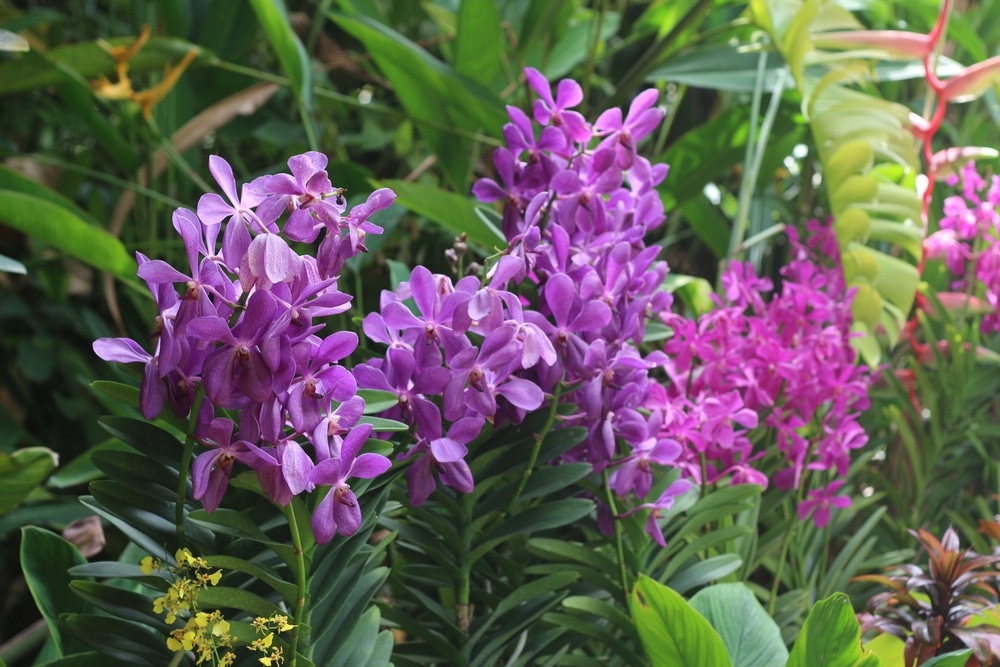First bred in 1969, this hybrid orchid known as the Brasso epidendrum Green Dragon is easy to care for and doesn’t require much watering. It’s an epiphyte. Therefore it grows on trees and doesn’t absorb its nutrients predominantly from the soil. Both overwatering and prolonged direct sunlight can actually damage this beautiful orchid.
| Botanical Name | Epidendrum spp. |
| Common Name | Epidendrum orchid |
| Plant Type | Perennial or Annual |
| Flower Color | Pink, purple, red, yellow, or white |
| Size When Mature | Varies depending upon species |
| Bloom Time | Spring and Summer |
| Sun Requirements | Full / Partial Sun |
| USDA Hardiness Zones | 10-11 |
| Soil PH Range | N/A – the soil PH range is not important |
| Soil Type | Acidic |
| Water Needs | Low |
| Native Area | North America and South America |
What You Need to Know About Brasso Epidendrum Green Dragon
With a name developed from the words “epi” and “dendron,” which means “upon trees,” the Epidendrum genus is an easy hybrid orchid to care for, as it requires little watering, and prefers indirect sunlight to thrive. Through its exposed roots, it collects its nutrients from the surrounding air and surfaces.
Its leaves are waxy, and its little flowers are typically purple, pink, yellow, white, or red. It thrives when kept as an indoor plant but can be kept outside in warm climates with the right amount of humidity, flowering in summer and spring. They’ll grow up to 2 feet if properly cared for, and exposure to pests or disease are not a concern for this plant. Resembling a religious cross, they’re sometimes called crucifix orchids.
How to Care for Brasso Epidendrum Green Dragon
Here’s everything you need to know about growing and caring for a thriving Brasso Epidendrum Green Dragon.
Light
The Brasso epidendrum Green Dragon thrives in indirect sunlight. Direct sun placement for prolonged periods will burn its leaves, especially during the most intense months of the summer. It’s best to keep this orchid in a place where it’ll receive bright sunlight that’s not direct. Finding the sweet spot is tricky, but providing too little light can cause their flowers to lay dormant.
Water and Soil Needs
When the top half of the soil of your Brasso epidendrum feels dry, it’s time to water it. You don’t want to water it too much, however, because an oversaturated Green Dragon will begin to rot. Its roots prefer to dry between watering cycles, ideally in soil that’s of a sandy or loamy consistency.
During warmer months, it’s best to water them once per week, preferably in the morning. However, in the colder months, watering these orchids once every two to three weeks will suffice. As with sunlight, finding the perfect moisture balance can be challenging.
When grown in containers, gravel, moss, sand, or mixtures with bark can be used. As their genus typically grows on trees, they don’t soak many nutrients from the soil. Therefore you could use a blend that’s sold specifically for orchid plants.
Temperature Requirements
This orchid is found in North and South America and prefers daytime temperatures somewhere between 77°F–82°F and 59°F– 68°F at night. A humidity level of between 60%–70% is also ideal, and this level can be accomplished with misting every few days. They’re considered low maintenance for many orchid enthusiasts.
Fertilizer
These orchids do better with high-quality fertilizer that’s balanced and contains nitrogen, potassium, and nitrogen, along with calcium, magnesium, copper, zinc, and sulfur. This mixture can be diluted with water and fed once every one to two weeks.
Common Diseases
The Brasso epidendrum Green Dragon is resistant to both disease and common pests.
Brasso Epidendrum Greebalancen Dragon Propagation
To propagate the Brasso epidendrum orchid, you’d simply replant the small cuttings of its baby sprouts, known as keikis. These newly cut keikis will quickly clone your main orchid plant when cared for similarly in a bed of moss that’s moist.

